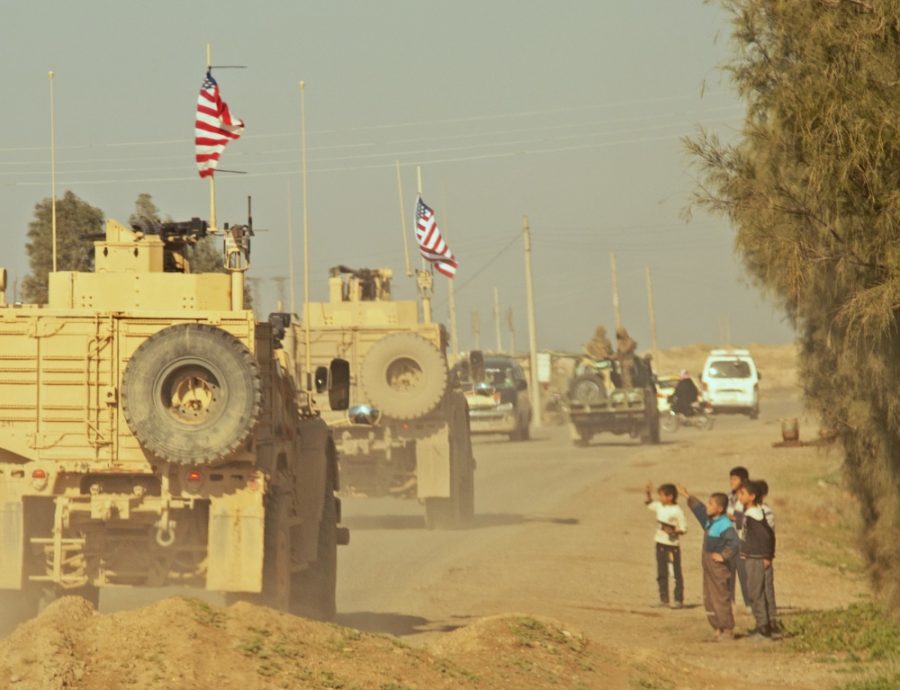New Troop Movements
October 23, 2019
Last week, President Trump announced plans to remove U.S. troops from Syria amid growing tensions between two U.S. allies, the Turkish government and Kurdish forces, both of whom have helped fight the Islamic State (IS, ISIS, ISIL) through the years.
The Kurdish backed Syrian Democratic Forces (SDF) have been a key ally in the fight against terrorism in Syria with nearly 11,000 deaths contributed, while the U.S. had 6,000 casualties. Turkey and the Kurds have a long history of conflict. The Turkish government labels the Kurdish forces as “terrorists” and a threat to their country, which is one of the reasons they are trying to attack the Kurds. To understand the tensions between the two, their history must be considered.
Turkey has had a long-lasting problem with the Kurds and their groups. The Turkish government banned the Kurdish language, dress and folklore in Kurdish occupied regions of Turkey in the late 1970’s. The Turkish government also banned the words “Kurdistan” (An independent country that the Kurds were fighting to achieve.), “Kurds” and “Kurdish” in the early 1990’s. In the 1990’s, one of the main Kurdish parties, the Kurdistan Workers Party (PKK), fought against the government of Turkey in open conflict. Turkey, along with the support of the C.I.A., found the leader of the PKK in Kenya. The PKK was originally described as a Marxist ideology group who then shifted their beliefs to include political rights and autonomy from Turkey.
Over the past decades, the conflict between the Turkish and the Kurds has not settled.
President Trump’s plan to move 1,000 troops out of Syria has received backlash from both sides of the political aisle. In one of the most recent bipartisan agreements, 129 Republicans joined over 200 Democrats in denouncing the president’s decision. The resolution, which also called on the Turkish president to end military operations against Kurdish forces, was passed 354-60.
The 1,000 troops are expected to be moved to western Iraq while a few soldiers, estimated between two-three hundred, will remain in Syria.
Before the planned invasion into northern Syria, the U.S. and the government of Turkey have agreed to a 120-hour ceasefire. Vice President Pence announced in a press conference that in addition to the ceasefire, the two should be, “committed to defeat ISIS activities in northeast Syria.” Vice President Pence said.
President Trump sent a letter to Turkish President Erdogan in an attempt to sway his decision of attacking the Kurds. According to reports close to President Erdogan, the Turkish president refused the letter and swiftly put it in the garbage bin.
Some of the statements from the letter, “Let’s work out a good deal! You don’t want to be responsible for slaughtering thousands of people, and I don’t want to be responsible for destroying the Turkish economy – and I will.” President Trump said. “I have worked hard to solve some of your problems. Don’t let the world down”
The letter ended in a harsh tone towards the Turkish president, “History will look upon you favorably if you get this done the right and humane way. It will look upon you forever as the devil if good things don’t happen. Don’t be a tough guy. Don’t be a fool!” President Trump said.
U.S. Defense Secretary Mark Esper has been defending the president’s decision, while also helping with the results of the decision. The troop movement to Iraq is a surprising development in the Syrian scenario, considering Trump tweeted, “Bringing soldiers home!”
According to Esper, the troops will have specific tasks once they’re in Iraq.
“One is to help defend Iraq and two is to perform a counter-ISIS mission as we sort through the next steps,” Esper said. “Things could change between now and whenever we complete the withdrawal, but that’s the game plan right now.”


